Archive for February, 2013
February 28th, 2013 by dave dorsey

New York Times carried a story about the renovation of intricately detailed Tibetan murals in Nepal. Looking at the photograph of the work in progress, I perked up. What I saw seemed like something from another age. Anonymous, selfless workers doing what the original artists had done, recreating an image that embodied an entire system of peaceful, life-affirming values, as well as a moral code to make those values a template for daily behavior. It was an image meant to have meaning for centuries, or, actually, for any time and place—no one who painted the image then, and no one recreating it now, suspected that the Buddhist truths behind it could be superseded by something new. None of them, for example, suspected that we would some day discover that we aren’t mortal (sorry Ray Kurzweil), life isn’t painful, or that there’s no reason to overcome our own worst tendencies. The work is meant to be a visualization of eternal verities, not temporal realities, or, worst of all, historical concerns.
When the Metropolitan announced a whole new wing devoted to Islamic art, I had the same feeling of kinship, not so much because it’s spiritual art but because of the physical demands of the actual craftsmanship. In both cases, the artwork is enormously time-consuming, requiring great patience and concentration. It’s form embodies the immersive experience of making it: the outcome is intricate, symmetrical, rooted in pattern, a kind of mandala—a symbolic representation of wholeness. Completion, balance, symmetry, order are qualities of mind for someone creating the work, and formal qualities in the work itself. The art requires selfless submersion in the effort, rather than an assertion of the self through some kind of expression of individuality. It’s almost taken for granted in this age that art is meant to be a form of self-expression, but my experience of it has been that it’s a long training in obedience to the demands of the work: and you don’t invent the demands. When I paint, it’s more about facing what I can’t do than whatever skills I’ve accumulated. The demands are imposed on you by a variety of factors: talent, the kind of art you’re chosen to make, and so on. Getting it right means struggling to discover what needs to be done, not expressing something you already know or just doing something you know how to do.
Which may explain my warm response to all this seemingly tedious work. Undoubtedly, it comes from having spent long hours, days, or weeks, attentively recreating the complex, colorful symmetries of a Persian carpet—my little personal taste of Islamic art—in some of my larger still lifes. I’ve always understood these rugs as big, user-friendly mandalas you can sink your toes into—a hint of the incredible complexity of the world, as well as the order within that complexity, the suggestion of the recursive, fractal patterns embodied in nature. Basically, you’re standing on a symbol of the universe, when you walk into a room with one of them spread out underfoot, and reproducing their patterns affords some of the same meditative calm and clarity that Islamic and Buddhist art offer to the workers who create it and MORE
February 27th, 2013 by dave dorsey
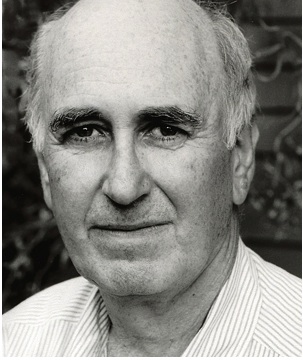
Phillip Lopate. Photograph by Jill Krementz
When I went to college, I was surrounded by people who were interested in William Burroughs, John Ashbery, Beckett and post-Beckett. The whole sensibility was, “Beckett has done this, now how can we advance his heroic move?” I thought, “Well, maybe I’ll read Henry Fielding.” If I need to experience avant‑garde, I’ll read Don Quixote or Tristram Shandy. –Philip Lopate in Harper’s
February 26th, 2013 by dave dorsey
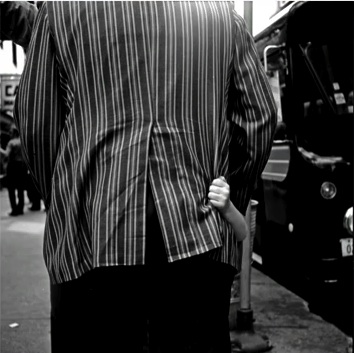
Trailer for a documentary about Vivian Maier. I’m eager to see this and to see more of her work. Like Winogrand, she became primarily someone who lives to see, and didn’t have time to organize or track the trail of photographs that resulted from it. Paying attention became an end in itself.
February 25th, 2013 by dave dorsey
 Usually, when I paint successfully, I am working from a kind of craving, not out of a compulsion to get work done. I don’t mean a vague desire to have a finished painting to hang somewhere. (That’s closer to having a goal to achieve.) I actually mean the physical feeling of desire to spread paint on canvas, so that the act of applying the paint is a gratifyingly sensuous experience. I attended a poetry workshop run by Hayden Carruth at the University of Rochester once, when Carruth was teaching at Syracuse, and he said that writing poetry was physically pleasurable in a way he didn’t understand or try to explain. I’ve forgotten everything else he talked about, of course.
Usually, when I paint successfully, I am working from a kind of craving, not out of a compulsion to get work done. I don’t mean a vague desire to have a finished painting to hang somewhere. (That’s closer to having a goal to achieve.) I actually mean the physical feeling of desire to spread paint on canvas, so that the act of applying the paint is a gratifyingly sensuous experience. I attended a poetry workshop run by Hayden Carruth at the University of Rochester once, when Carruth was teaching at Syracuse, and he said that writing poetry was physically pleasurable in a way he didn’t understand or try to explain. I’ve forgotten everything else he talked about, of course.
This isn’t true usually throughout the entire course of a single painting. There are patches and passages that frustrate me and seem to resist, but creating the image has to be delightful at some level for the image to convey any kind of delight to the viewer. It’s as if I can feel the image in my body as I’m making it real outside my body. And when I’m painting well, it’s as if I’m satisfying a physical appetite, not simply basking in a nice, warm emotion that things are going well, which is how I feel in many different situations, such as making good time on the highway, without getting stopped for speeding, while driving down to New York City. The act of driving itself is servitude and tedium: the notion that I’ll be spending less time doing it is what gives me a little glow of modest pleasure. Making a picture and watching its contours and colors emerge from behind my brush—it’s feels good in a purely physical way.
February 24th, 2013 by dave dorsey
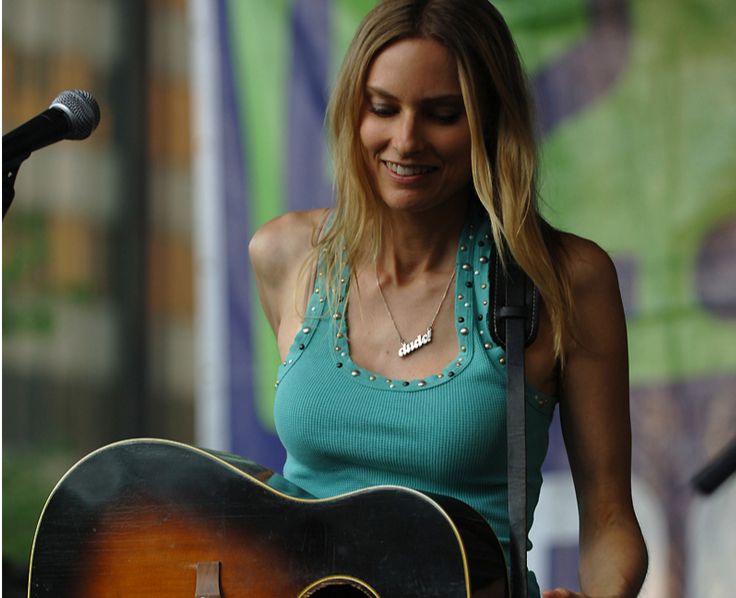
“Being stuck in one place and bored out of your mind is the key to creativity.”
–Aimee Mann to Marc Maron
February 22nd, 2013 by dave dorsey
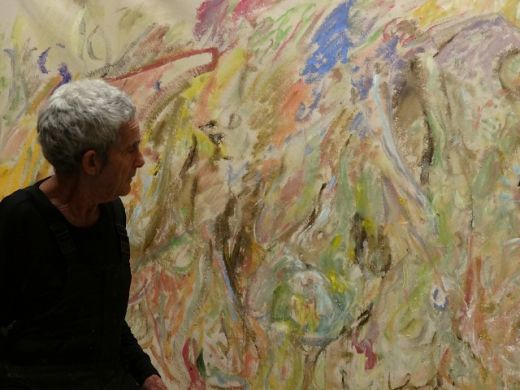
Big up to the paintings and the post at Hyperallergic. It’s on my list for a gallery/museum tour in a week or so. “Poons carries the torch, heralds the song, then asks us to abandon all knowledge as we stand in rapture. Empty.” Abandon all knowledge, ye who enter here. Yes indeed, as an approach to painting in general, not just Poons.
February 22nd, 2013 by dave dorsey
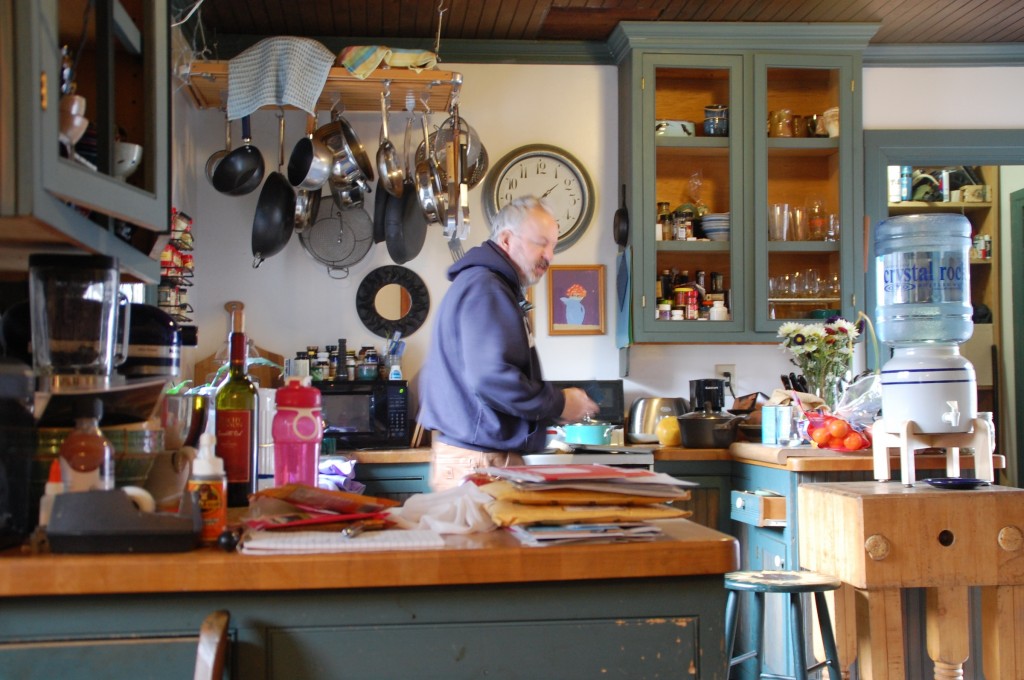
Rick in his kitchen
My friend Rick Harrington,just went through cancer surgery. They caught all of it, as they say, but the recovery laid him up for a couple months. Two months without painting and the mind begins to circle around how Quixotic the whole enterprise can feel. But he’s ready to gear up again and was in good spirits when I finally drove out to see his studio in East Avon, south of Rochester. He rents a house and studio next to a large expanse of farmland, which looked ready for a crop already, plowed and dark with snowmelt beyond the converted garage where he paints. (The temperature is back to 15 degrees today, so that melt meant nothing.) We had tea in his house and talked for nearly an hour and then spent another hour in his big studio, talking about painting. One thing we agreed on: this economy isn’t good for anyone, least of all artists. He had a couple years where he was selling work so fast, he could hardly keep up with the demand, and then came the real estate crash, the recession and this so-called recovery, which is mostly about Wall Street. His paintings still sell, but he doesn’t think he can map a path toward economic self-sufficiency as easily as he could have only a few years ago. The dream of forgetting about money and thinking only about how to do better creative work: how many artists can live that way? A lot fewer than were doing it before 2008.
Rick has a dog, Ulysses, who is closer to a Shetland pony than anything actually canine. He’s also more mastiff than Rottweiler (a cross between both) who was always at our sides, looking for affection, hugs, and stray crumbs of the chocolate chip cookies Rick had just baked for his two sisters who were also recovering from health issues. We talked about money, MORE
February 21st, 2013 by dave dorsey
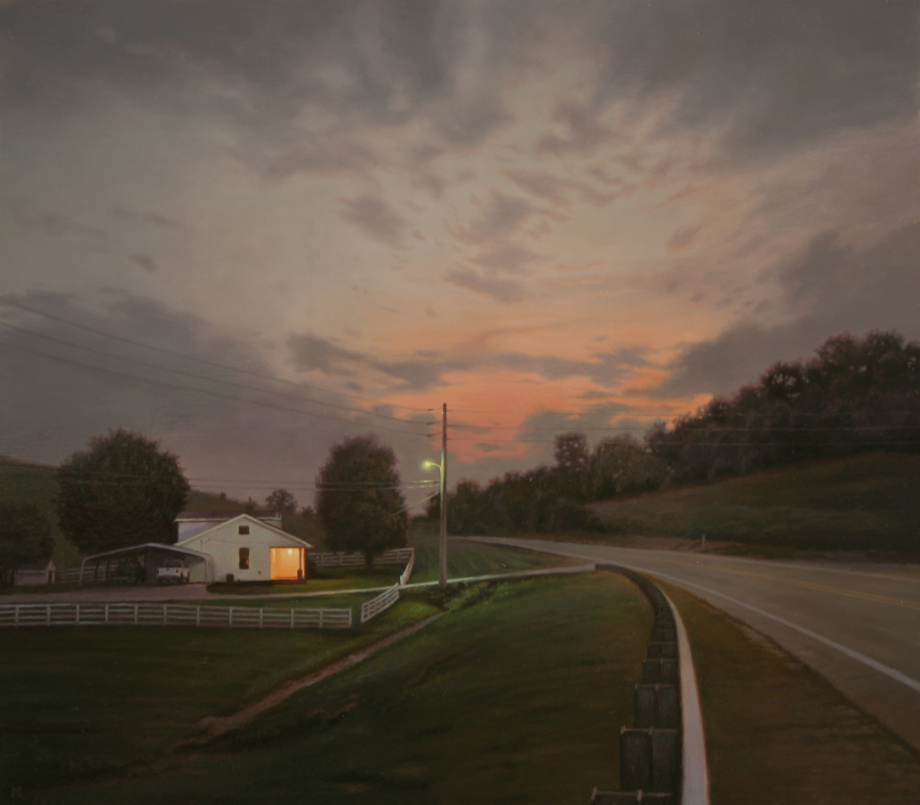
Home Before Dark, Matthew Cornell
February 20th, 2013 by dave dorsey

My Bloody Valentine, after two decades, finally released another album. I’m thinking, what’s the rush? I still haven’t exhausted Loveless, from 1991. There’s no point in repeating the legends about this album and how it was recorded over two years. It seems tailor-made for elitist hipsters, since it makes every effort to take the edge off the music’s beauty. It has to be one of the most manicured recordings in history engineered to sound as close as you can get to the effect you get when you’re hearing three radio stations at once near some Bermuda Triangle of the dial. For me, this is Ireland’s lyrical, melodious answer to Sonic Youth’s raw power, but more ethereal and yearning and, well, innocently hopeful. The trick is to zero in on the harmonies and melodies behind the disguise of distortion. It seems you’re hearing most of it, muffled and remote, from six or seven floors above your garden apartment. So you end up playing these tracks over and over, trying to clearly discern these songs you’ll never being able to quite pin down because . . . well, let’s try again . . . because they’re being played about a mile away, and they’ve been carried to you by the shifting wind. If only you could be right there where it’s happening, hearing it the way it really is! From only a quarter mile away, say. And that’s what keeps you coming back.
Like so much of life, it’s almost there, right in front of you . . . and yet . . . and yet . . . . Turn Loveless way down, lower than you play anything else in your collection. It still sounds incredibly loud, just farther away, at a lower volume. Listen with earbuds and the difference is even more distinct. What’s noise equalizes with the actual music and you still can’t understand a single word of the lyrics but the fuzz begins to sound like the innate sound of an electric guitar and the track relaxes and everything falls into place and an actual song, arranged with haunting complexity, floats up out of the auditory bed of white noise. And yet . . . the perfect experience of hearing it is still just slightly out of reach . . .
February 19th, 2013 by dave dorsey
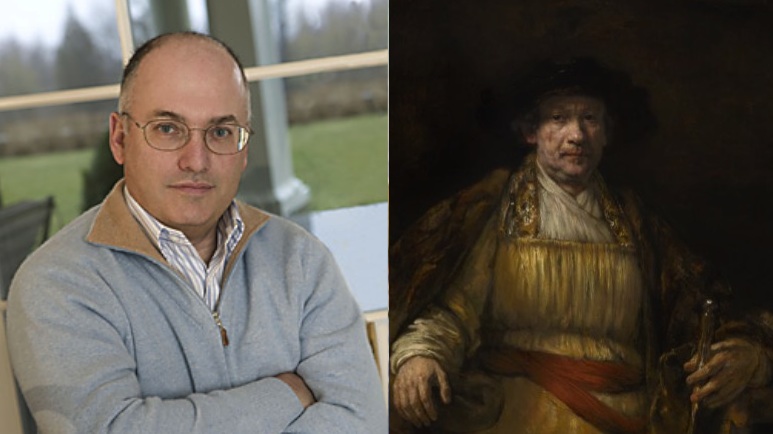
Steven Cohen and Rembrandt at The Frick
Is anyone as weary of the term “cutting edge” as I’ve always been? It is possible it will ever be retired? At N+1, you’ll find an essay built around the plight of Steven Cohen, a major art collector and the head of SAC Capital, currently under investigation for insider trading. The author of the piece Gary Sernovitz, draws loose comparisons between the “edge” that traders seek, which can drift into the illegal exchange of non-public information, and the “edge” that artists attempt to ride in their work. It’s more of a poetic play on words than anything else—both edges put you ahead of everyone else, by a little or a lot, but one is illegal and the other simply represents an exhausted idea of what matters in art. Both do represent something that can result in a lucrative advantage over competitors. The essay has a sort of proclamatory, elegiac tone that feels more enthralled by the notion of this elusive “edge” than the essay’s skeptical take on Cohen would seem to warrant. Some fine points are made though, especially these on the notion of edgy “newness”:
A visual artist hits his audience with a visceral punch. The potential responses to a work’s “newness” seems much more binary (than a response to the influence of previous writers in, say, fictional prose). One would continue reading prose that is Bellowish and happily let the author have her influences. One would wonder after seeing a Pollockish drip painting whether the painter was an ironist or a hack.
(Some of use wouldn’t wonder this at all, but a lot would.)
How hard it must be now for an artist when it seems that not only has every material form and format imaginable been tried to express Truth and Beauty but every idea has now also found material form. I watch in awe as artists rise to face that challenge, and even more so when they succeed. But sometimes I feel like I’m witnessing the strain. All artists respond to their inner life and the outer world and other art in some mix. These basic ingredients have not changed. But too often, after leaving a contemporary art exhibition, having hungrily wanted a powerful aesthetic experience, I wonder why I was left cold. . . it feels, sometimes, as if an edge has become the only ante to be exhibited at all. As if the edge has become the whole point.
(I’m not disagreeing, but the edge became the whole point a long time ago.)
Artists—traders—the Art Collector himself—are faced with the efficient market, the weight of precedent, all that has been and is being done. Every day it gets worse. But the best of them, like de Kooning, are mercury, racing to be first to an edge before it disappears.
This is now the template for the career of a successful artist: a few incandescent years, a few decades, and then repetition, self-parody, irrelevance, death. But that’s what we admire about them. Their fight against their condition is our fight against our condition. They are trying to fix a vanishing edge in a material form. And that struggle against the mortality of the edge, which is the mortality of every minute, which is mortality, is affirming and heroic and generous.
Just shoot me now. If “newness” is the game, then all of what Sernovitz says is totally on the money, as it were. If “newness” has ceased to be the point, and it has, then none of what he says really applies to the making of art. A compelling quality of freshness—not some critically-identifiable “newness” that can be extracted from a particular work—finds its way into the picture when the artist remains faithful to whatever compels him or her, individually, to get to work in the first place. That impulse, as with De Kooning, whom he was continuing to celebrate there in that last quote, used to come from an historical struggle with predecessors, a wrestling match with the anxiety of influence, as Harold Bloom called it, in another context. But the “new” is new now only in the sense that a particular snowflake or an individual person is “new”. Considered from one perspective, a work of art is just the same old thing, identical with all the rest. But get close enough, emotionally, personally, or just optically, and some work is utterly unique because it’s so utterly the person who made it. The quality and power of that quiddity—yeah, that’s right, I used the word quiddity—depends on qualities of the individual artist’s personality and character, not on where the work fits into any sense of historical “newness.” On the subject of not needing to be at the edge, one more quote from the interview with Ran Ortner I pilfered in my previous quote, about Rembrandt’s last years:
Rembrandt starts his career in Amsterdam . . . where there is lots of new wealth. He becomes extremely successful and buys an expensive home and fills it with antiques: Roman armor, fossils, collectibles. He marries a woman he adores, and they have four children. He has everything. And then three of his four children pass away. His wife dies. His work is no longer fashionable. Amsterdam moves into the second generation of wealth, and the nouveau riche prefer the rococo, the intricate and overdone. Rather than follow trends, Rembrandt becomes more and more direct and brutal, his style rougher, the work more immediate. His paintings don’t sell. He loses everything. But it doesn’t discourage his inner need to be fully who he is . . . when he paints his self-portrait in golden robes, he’s lost his home, is bankrupt, and is living in a poor part of town. Yet he paints himself as a king on a throne because he has his empire of dirt.
His little nod to a Nine Inch Nails lyric baffles me, since it was a song about moral desolation and addiction, not noble poverty, but you get his drift. No cutting edge to be found anywhere in this. No whiff of anything “new” anywhere in that scenario. The new was probably off doing something far less interesting at the time. Whatever’s merely new eventually gets old, and Rembrandt’s work never gets old.
February 17th, 2013 by dave dorsey
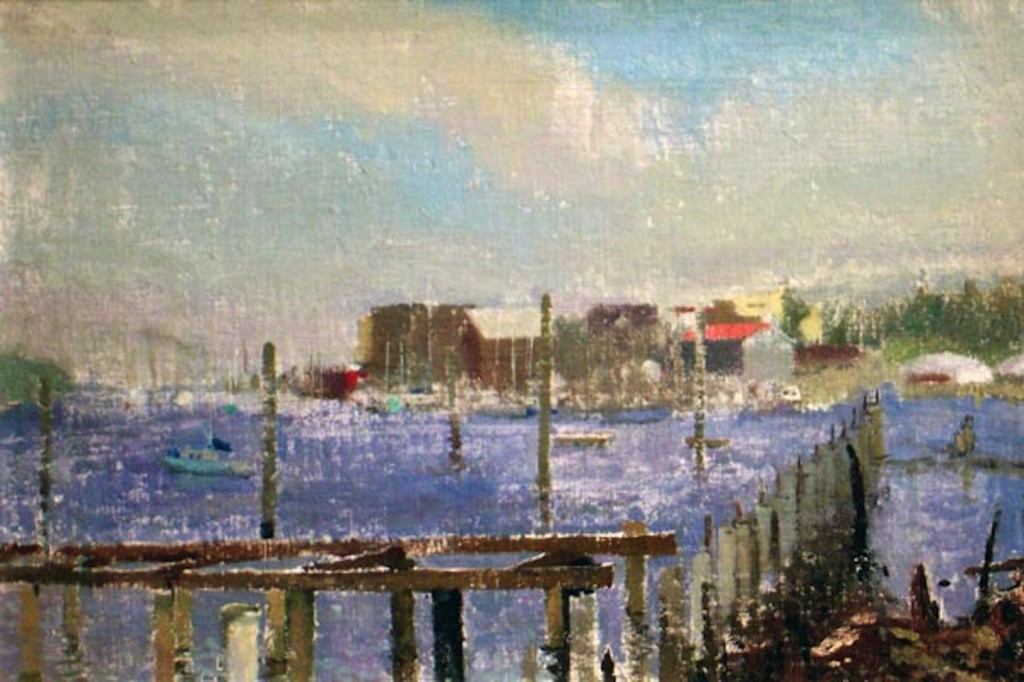
Belfast Bay, Matt Klos
February 14th, 2013 by dave dorsey
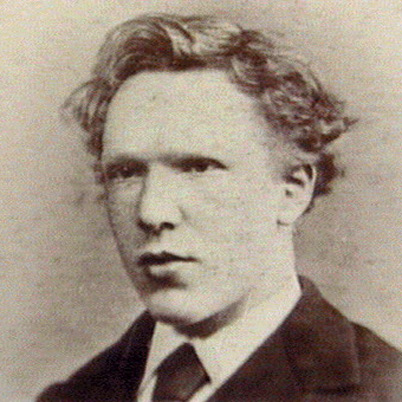
What the word artist implies is looking for something all the time, without ever quite finding it in full. It is the very opposite of saying “I know all about it. I’ve already found it. As far as I’m concerned, the word means, “I’m looking. I’m hunting. I’m fully involved.”
–Vincent Van Gogh to Theo, from an interview with Ran Ortner, who paints the ocean.
From the interview:
It wasn’t until I read Thomas Merton that I came upon something that helped me. He said there’s nothing as old and as tiresome as human novelty. There’s nothing as immediate and new as that which is most ancient, which is always in the process of becoming. Wow, I thought, that is exactly how I experience the ocean.
Something happens to time when you’re painting. You’re able to bring the span of your entire life into this one moment and into these few materials.
That’s what makes art great. It’s a physical object that carries some of the magic back from the mysterious place. Something I have brought back with me from the descent, a token of the experience.
A scientist, a monk, and an artist are all looking for the same thing, some deeper reality outside of themselves, or inside themselves.
The rules of the contemporary art world are crystal clear . . . .if one works with representation one must use irony, social commentary or wit in the work to avoid becoming saccarine or decorative.
—Ran Ortner
Sorry, but gonna have to break those rules . . . as Ortner himself does.
February 13th, 2013 by dave dorsey
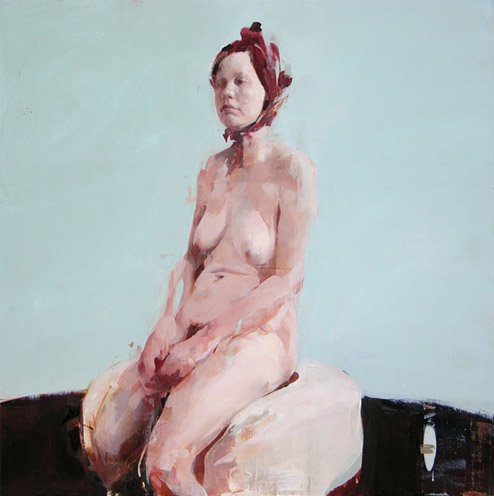 Rick Harrington emailed me this interview. Love it.
Rick Harrington emailed me this interview. Love it.
“Build up your self esteem to the level that might seem unwarranted. This will help you ignore both positive and negative responses to your paintings. Both are usually misguided, since they come from the outside. Be your most severe and devastating critic, while never doubting that you are the best thing since sliced bread.”
“The moment something works well and is under control – is the time to give it up and try something else.”
“Put all your eggs in one basket. Precarious situations produce intense results.”
“Forget subjective, it is mostly trivial. Go for the universal.”
“Schiller decided that there are really just two kinds of artists: naive and sentimental. Naive artist works with the first-hand experiences, uncompromised by self-analysis. Sentimental are works that are self-aware of their place in history, theory, etc. One usually sees this kind of work accompanied by an artist statement. I think I am more naive than sentimental in the things that inspire me.”
–Alex Kanevsky, Vivianite
February 12th, 2013 by dave dorsey
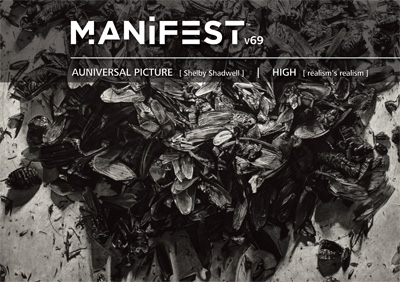
I wasn’t able to attend the reception, but this show got a huge turnout. Can’t wait to see the other work in this catalog. A little shout out to the participants from Jason Franz on his Facebook page:
This one is a beauty! Including works by Shelby Shadwell,Joseph Crone, Aidan Jos Schapera, Elise Schweitzer,Shannon Hartman Cannings, Gaela Erwin, Rob Anderson, Bain Butcher, David Dorsey, Brett Eberhardt, Bridget Grady, Nathan Haenlein, Mark Hanavan, Phillip Jackson, Bo Kim, Kent Krugh, Anne Lindberg, Louis Marinaro, Laurin McCracken, Michael Meadors, Joseph Moniz, Douglas Norman, Ann Kaplan, Jose Sanchez (Felox), Benjamin Shamback, and Dennis Wojtkiewicz.
I know what this one looks like already:
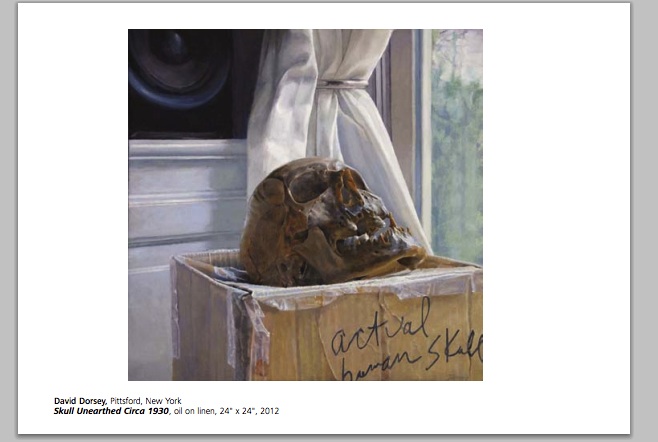
February 7th, 2013 by dave dorsey
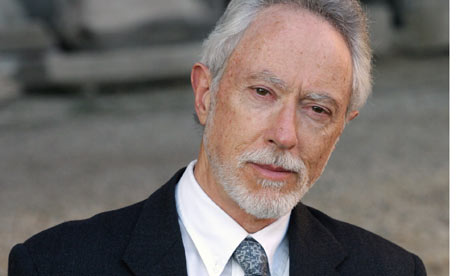
“Given that the Venice Biennale has metastasized in recent years into an all-out plutocratic orgy featuring Louboutin-shod scenesters pushing and shoving to get onto Roman Abramovich’s yacht, “J.M. Coetzee, curator” sounds at first like a joke from some art world Onion—as unbelievable as Thomas Pynchon appearing on “Oprah” or Joan Didion doing a Reddit AMA. Coetzee may or may not be the greatest living writer in the English language, but he’s certainly the gravest. And while sending Coetzee to Venice may result in a fish-out-of-water surprise hit, I wouldn’t bet on it. He’s a writer whose whole career has been devoted to the virtues of seriousness, but in the funhouse of contemporary art, seriousness doesn’t look like a moral imperative. It looks like a stylistic tic, and I wonder if he realizes that.”
The New Republic, Feb. 7, 2013
February 5th, 2013 by dave dorsey
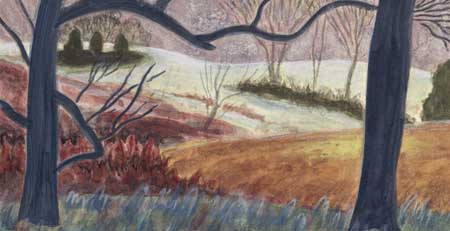
High Meadow, Nick Blosser
A few days ago, I read another great piece from Roberta Smith. It’s ostensibly about how museums need to give far more prominence to folk art and outsider art. Yet it’s really about the need to break out of many of the preconceptions that have ruled art for so long. In it, she hit many of her refrains about how the art world needs to shrug off conventional guidelines for determining what’s “important” in art. She’s said it before, she’ll say it again. She suggests, sensibly, that it might stir new insights to give folk art far more prominence, juxtaposed with mainstream art from the same period. Her larger point, though is that it would also make sense to abandon the exhausted vision of art as marching forward through various periods toward something better, or more relevant, or more . . . X . . . pick the adjective of your choice. May I suggest scrapping the word “important,” since the best literature, movies, art and music aren’t about anything but the totality of life, which isn’t great or trivial, or important or unimportant–it just is. Being intensely aware of the odd fact of just being, and only that, seems to me the highest aim of art, even though it often seems to amount to nothing. The hard part is simply being fully aware of what’s there, the isness of whatever it is you behold. This used to be the imperative of art, to simply pay passionate attention to whatever it is that’s before you, even if it’s nothing more than the work itself, back before art lowered its aim so dramatically over the past fifty years. (Spare me the exceptions to this, I know there are a ton of them.) Smith has been a skeptic about a lot of fundamental assumptions through the years: that artists need to have an art school degree, that we should refer to making art as a “practice,” as if it were a profession like medicine or jurisprudence, and that the people who determine what’s great and what isn’t always know what they’re doing. Anyway, it’s a great piece, which extracts more significance than I ever expected from a subject that sounds at first as if it ought to be dusted off for a dry discussion on how to curate one’s permanent collection . . .
What surprised and pleased me, though, is that she brought to mind one of my favorite artists, Nick Blosser, a painter in Tennessee whose work I saw many years ago at a little solo exhibition at the Adam Baumgold Gallery on the Upper East Side, after spotting a notice in The New Yorker. Blosser strikes me as someone who works in a style close to folk art, and he doesn’t seem to fit anywhere into that old historical agenda that sees 20th century art as a march from one outmoded movement to the next, toward greater and greater . . . what . . . freedom? . . . (insert whatever adjective you picked to fill in the blank above.) He simply works in an extremely personal way, building very small pictures in a style that at first seems primitive and then achieves a kind of haunting, dreamlike music, full of the seasons, in love with the woods, and seemingly ecstatic about almost anything he happens to see. He seems to have paid no mind to the course of modern and postmodern art. He may look like one, but he’s no outsider. He’s won two National Endowment for the Arts fellowships and a Rome Prize fellowship. Yet he’s done it all without trying to fit into the cool, cerebral, ironic sophistication that has ruled visual art for so many of the years he’s been working. The vitality of what he does, for me, stands as a confirmation of what Smith says in her piece: the freshest and best can come from the most unexpected places and from people who could say, as Oscar said to Lucinda, “I don’t fit.” Now there was an artist I admire, that Oscar. He was so much of an outsider, he didn’t even exist.
February 3rd, 2013 by dave dorsey
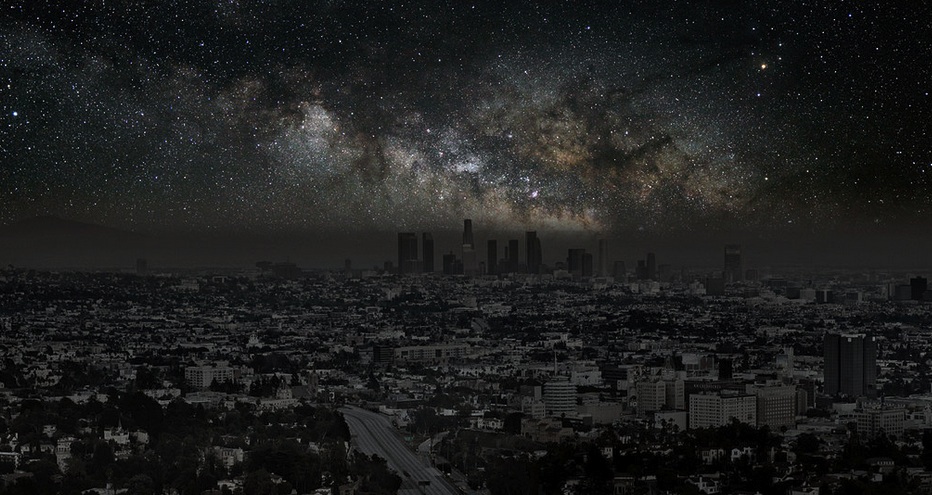
The night sky without the city glow
What you would see in the sky if city lights didn’t obscure the stars. Great slide show in the Times.

















